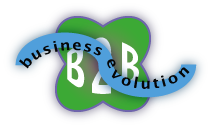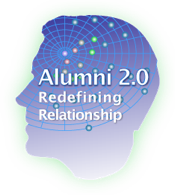 This Drive to Trust trailer offers a quick behind-the-scenes look into why I’m doing it. Drive to Trust is CSRA’s major initiative this year. We’re partnering with firms in all kinds of industries to show that trust-building in digital public achieves marketing goals much, much better than promotion. These daring organizations will learn how to change how they relate to people, and they’ll become much more competitive. This Drive to Trust trailer offers a quick behind-the-scenes look into why I’m doing it. Drive to Trust is CSRA’s major initiative this year. We’re partnering with firms in all kinds of industries to show that trust-building in digital public achieves marketing goals much, much better than promotion. These daring organizations will learn how to change how they relate to people, and they’ll become much more competitive.
If you’d like to watch this post instead of reading it, just click the thumbnail button.
[…]
 This Executive’s Guide to Blogging offers executives a pragmatic, conservative approach to blogging. For years, now, I have beseeched all the executives and “knowledge workers” I know (that’s thousands) to blog, so please consider this as part of that campaign—with benefits (because this is a how-to post). Here’s why: In the Knowledge Economy’s pervasive digital networks, you are invisible unless you come across people’s screens regularly. And, while you are invisible, your potential business partners are seeing people who do flit across their screens. If you aren’t there, you are in a bloody ocean that gets smaller every year. Don’t stay in, the water is not fine. Please understand that I’m stating this as a simple fact. I’m sure you’ve read books like The Long Tail, which describe how we are all publishers now, that is, those of us who decide to use the free tools at our disposal. This Executive’s Guide to Blogging offers executives a pragmatic, conservative approach to blogging. For years, now, I have beseeched all the executives and “knowledge workers” I know (that’s thousands) to blog, so please consider this as part of that campaign—with benefits (because this is a how-to post). Here’s why: In the Knowledge Economy’s pervasive digital networks, you are invisible unless you come across people’s screens regularly. And, while you are invisible, your potential business partners are seeing people who do flit across their screens. If you aren’t there, you are in a bloody ocean that gets smaller every year. Don’t stay in, the water is not fine. Please understand that I’m stating this as a simple fact. I’m sure you’ve read books like The Long Tail, which describe how we are all publishers now, that is, those of us who decide to use the free tools at our disposal.
Blogging is 21st century thought leadership, which is table stakes in the Knowledge Economy. Your thoughts represent and “scale” you, so they help you to connect with people with whom […]
 In Mastering The Uncomfortable Art Of Personal Branding, Amber Mac provides some valuable insight into how individuals can engage people by sharing a mix of personal and professional details on their social media profiles. She sites @garyvee. The post could have been more valuable if it had mentioned several use cases and the importance of knowing your audience. In Mastering The Uncomfortable Art Of Personal Branding, Amber Mac provides some valuable insight into how individuals can engage people by sharing a mix of personal and professional details on their social media profiles. She sites @garyvee. The post could have been more valuable if it had mentioned several use cases and the importance of knowing your audience.
Moreover, individuals engage more effectively when they are clear about whom they’re trying to engage. For example, imagine yourself across the table with two of three of your stakeholders at lunch, what would you talk about? Those are the kind of details to share. Not random things. Another of the post’s valuable points: weave the things together in terms of a story. That will help people relate to what you share and remember you better. We covered this in more detail here: http://bit.ly/blogtwjob2 – see the section under “use scenarios”
B2B Customers Getting Social Fast: How Marketing and Sales Can Evolve explains how clients/customers are smarter and want a new kind of relationship | The new economics of business reputation
 While preparing to launch Social Business Services for B2B Sales in January 2012, I have been engaged in its Ecosystem Audit. I have plumbed online conversations about B2B Sales and Marketing adoption of social business (erstwhile social media). I have been struck by a recurring realization: a large part of Marketing and Sales as we know them is significantly out of alignment with B2B customers. Social business is permeating customer networks throughout the economy and changing customer behavior and expectations. This has created a rare opportunity for B2B marketing and sales people who understand and respond ahead of the market. If I’m right, this could be one of the most important posts you read this year. While preparing to launch Social Business Services for B2B Sales in January 2012, I have been engaged in its Ecosystem Audit. I have plumbed online conversations about B2B Sales and Marketing adoption of social business (erstwhile social media). I have been struck by a recurring realization: a large part of Marketing and Sales as we know them is significantly out of alignment with B2B customers. Social business is permeating customer networks throughout the economy and changing customer behavior and expectations. This has created a rare opportunity for B2B marketing and sales people who understand and respond ahead of the market. If I’m right, this could be one of the most important posts you read this year.
Two quick examples of misalignment: one of Marketing’s underlying assumptions is that it is not economically feasible to have large-scale one-on-one customer conversations, so marketing must […]
Using Social Networks for Recruiting and Sales shows how firms can increase quality of recruits and sales leads while cutting costs.
 Social networks can help organizations, whether commercial, nonprofit or government, to significantly improve their efficiency in business processes like recruiting, sales and service. This is what we call “Enterprise Process Innovation” because, by using social networks to create and nurture relationships with alumni, your employees can diminish the time required to accomplish tasks within these processes. It’s well known that most alumni, former employees, move to firms that are related to your business (adjacent in the value chain) or complementary in some way. Yes, some move to competitors, but they are usually in the minority. Social networks, by significantly reducing the cost of having relevant, quality conversations, make robust employee-alumni networks actionable as never before. Social networks can help organizations, whether commercial, nonprofit or government, to significantly improve their efficiency in business processes like recruiting, sales and service. This is what we call “Enterprise Process Innovation” because, by using social networks to create and nurture relationships with alumni, your employees can diminish the time required to accomplish tasks within these processes. It’s well known that most alumni, former employees, move to firms that are related to your business (adjacent in the value chain) or complementary in some way. Yes, some move to competitors, but they are usually in the minority. Social networks, by significantly reducing the cost of having relevant, quality conversations, make robust employee-alumni networks actionable as never before.
All organizations (I’ll use “firm” to denote for profit, government and nonprofit) have business processes that benefit from relevant insight and introductions from other people: insight about the situation of the prospect, where the best sources of new […]
 2011 Social Business Predictions and Recommendations describes current social business adoption and advices firms and people how to get ahead. 2011 Social Business Predictions and Recommendations describes current social business adoption and advices firms and people how to get ahead.
2011 will be remembered as the year “social media” fell by the wayside, strategy became a recognized prerequisite for serious efforts, and “social business” began displacing it in boardrooms’ mindshare. “Social media,” which usually tries to use social technologies to talk at people, has been the predominant “first use” of socialtech because marketing drives most social initiatives, and marketers “communicate,” i.e. push content, to their targets. When they “listen,” they use limited legacy processes such as focus groups, email marketing, data mining and online surveys. However, none of these scratch the real itch because they emphasize the company asking individuals structured questions; they don’t allow customer to customer interaction, which is ten times more illuminating because it is spontaneous and customer-centric.
Socialtech gets there, but marketers are ambivalent about it because it means a loss of control. And more profits and career growth for marketers, but they have to let go first. It’s a leap of faith, but […]
The example was IBM’s corporate social responsibility and green initiative. They realized it would be incongruent or unsavory to have a (physical) conference for green initiatives in which people would burn tons of CO2 getting there, so they held it in Second Life. The sales conversion ratio was equal to physical conferences. […]
Quick guide for time-strapped executives to outperforming rivals this year by using LinkedIn, blogging and Twitter. Extensive links to free executive guides to social networks […]
Why most people benefit from using LinkedIn and Facebook together to accelerate their business relationships: Key pointers on how to get started. […]
How to think about using Facebook, LinkedIn and Twitter for business.. brief comparisons of Facebook with LinkedIn and Twitter from a business perspective […]
|
|
 This Drive to Trust trailer offers a quick behind-the-scenes look into why I’m doing it. Drive to Trust is CSRA’s major initiative this year. We’re partnering with firms in all kinds of industries to show that trust-building in digital public achieves marketing goals much, much better than promotion. These daring organizations will learn how to change how they relate to people, and they’ll become much more competitive.
This Drive to Trust trailer offers a quick behind-the-scenes look into why I’m doing it. Drive to Trust is CSRA’s major initiative this year. We’re partnering with firms in all kinds of industries to show that trust-building in digital public achieves marketing goals much, much better than promotion. These daring organizations will learn how to change how they relate to people, and they’ll become much more competitive.
 This Executive’s Guide to Blogging offers executives a pragmatic, conservative approach to blogging. For years, now, I have beseeched all the executives and “knowledge workers” I know (that’s thousands) to blog, so please consider this as part of that campaign—with benefits (because this is a how-to post). Here’s why: In the Knowledge Economy’s pervasive digital networks, you are invisible unless you come across people’s screens regularly. And, while you are invisible, your potential business partners are seeing people who do flit across their screens. If you aren’t there, you are in a bloody ocean that gets smaller every year. Don’t stay in, the water is not fine. Please understand that I’m stating this as a simple fact. I’m sure you’ve read books like The Long Tail, which describe how we are all publishers now, that is, those of us who decide to use the free tools at our disposal.
This Executive’s Guide to Blogging offers executives a pragmatic, conservative approach to blogging. For years, now, I have beseeched all the executives and “knowledge workers” I know (that’s thousands) to blog, so please consider this as part of that campaign—with benefits (because this is a how-to post). Here’s why: In the Knowledge Economy’s pervasive digital networks, you are invisible unless you come across people’s screens regularly. And, while you are invisible, your potential business partners are seeing people who do flit across their screens. If you aren’t there, you are in a bloody ocean that gets smaller every year. Don’t stay in, the water is not fine. Please understand that I’m stating this as a simple fact. I’m sure you’ve read books like The Long Tail, which describe how we are all publishers now, that is, those of us who decide to use the free tools at our disposal. In Mastering The Uncomfortable Art Of Personal Branding, Amber Mac provides some valuable insight into how individuals can engage people by sharing a mix of personal and professional details on their social media profiles. She sites @garyvee. The post could have been more valuable if it had mentioned several use cases and the importance of knowing your audience.
In Mastering The Uncomfortable Art Of Personal Branding, Amber Mac provides some valuable insight into how individuals can engage people by sharing a mix of personal and professional details on their social media profiles. She sites @garyvee. The post could have been more valuable if it had mentioned several use cases and the importance of knowing your audience. While preparing to launch Social Business Services for B2B Sales in January 2012, I have been engaged in its Ecosystem Audit. I have plumbed online conversations about B2B Sales and Marketing adoption of social business (erstwhile social media). I have been struck by a recurring realization: a large part of Marketing and Sales as we know them is significantly out of alignment with B2B customers. Social business is permeating customer networks throughout the economy and changing customer behavior and expectations. This has created a rare opportunity for B2B marketing and sales people who understand and respond ahead of the market. If I’m right, this could be one of the most important posts you read this year.
While preparing to launch Social Business Services for B2B Sales in January 2012, I have been engaged in its Ecosystem Audit. I have plumbed online conversations about B2B Sales and Marketing adoption of social business (erstwhile social media). I have been struck by a recurring realization: a large part of Marketing and Sales as we know them is significantly out of alignment with B2B customers. Social business is permeating customer networks throughout the economy and changing customer behavior and expectations. This has created a rare opportunity for B2B marketing and sales people who understand and respond ahead of the market. If I’m right, this could be one of the most important posts you read this year. Social networks can help organizations, whether commercial, nonprofit or government, to significantly improve their efficiency in business processes like recruiting, sales and service. This is what we call “Enterprise Process Innovation” because, by using social networks to create and nurture relationships with alumni, your employees can diminish the time required to accomplish tasks within these processes. It’s well known that most alumni, former employees, move to firms that are related to your business (adjacent in the value chain) or complementary in some way. Yes, some move to competitors, but they are usually in the minority. Social networks, by significantly reducing the cost of having relevant, quality conversations, make robust employee-alumni networks actionable as never before.
Social networks can help organizations, whether commercial, nonprofit or government, to significantly improve their efficiency in business processes like recruiting, sales and service. This is what we call “Enterprise Process Innovation” because, by using social networks to create and nurture relationships with alumni, your employees can diminish the time required to accomplish tasks within these processes. It’s well known that most alumni, former employees, move to firms that are related to your business (adjacent in the value chain) or complementary in some way. Yes, some move to competitors, but they are usually in the minority. Social networks, by significantly reducing the cost of having relevant, quality conversations, make robust employee-alumni networks actionable as never before. 2011 Social Business Predictions and Recommendations describes current social business adoption and advices firms and people how to get ahead.
2011 Social Business Predictions and Recommendations describes current social business adoption and advices firms and people how to get ahead.